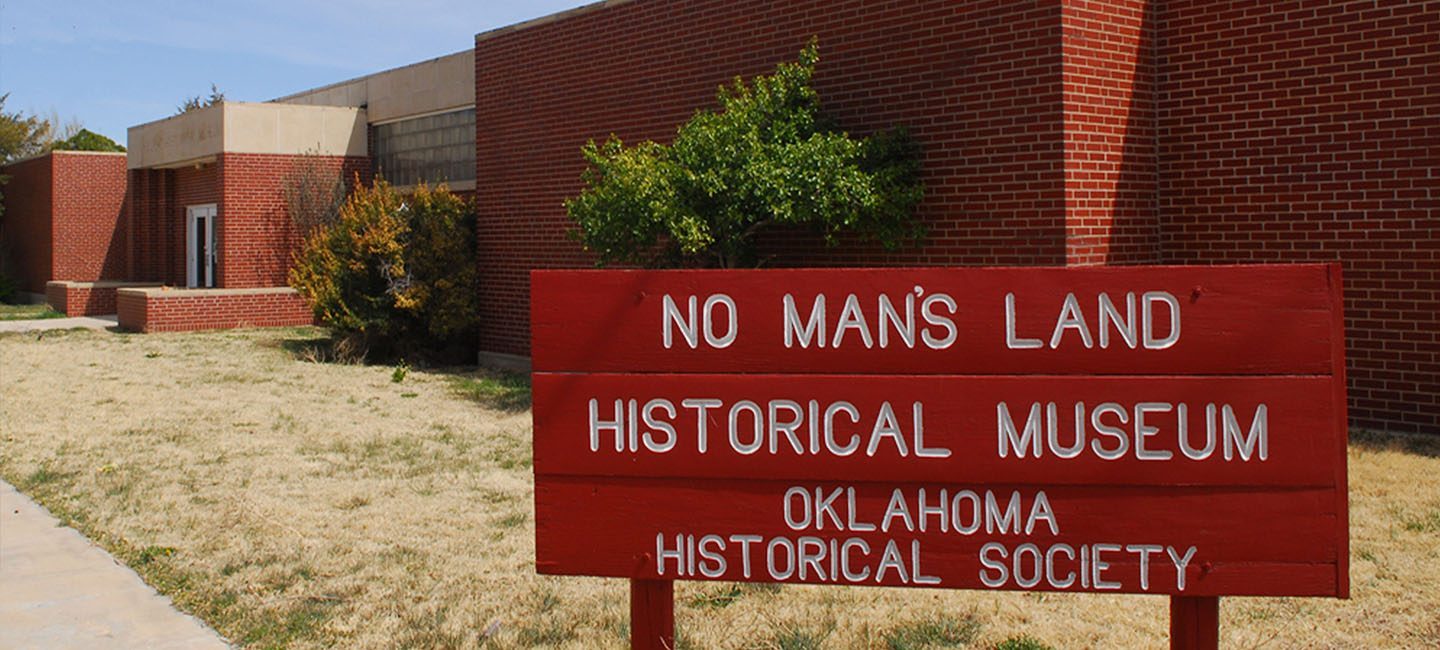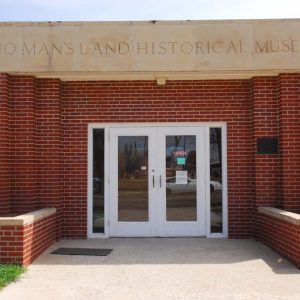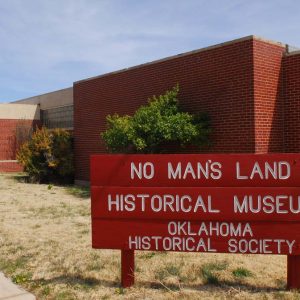No Man’s Land Museum

The No Man’s Land Museum didn’t always have its own home. Early in the history of Oklahoma Panhandle State University, founders and local residents saw a need to capture, categorize, and display area history and archeology. The first man to recognize this need was Dr. Claude Fly, Head of the Science Department of Panhandle Agricultural and Mechanical College (PAMC) in 1931.
Dr. Fly realized that students needed interests outside the classroom and curried student interest in developing a museum from a few rocks, bones, specimens, and fossils collected by other professors and stored in the basement of Old Hesper Hall. Students took these items and displayed them on the second floor of Sewell-Loofbourrow in the spring of 1932. By 1938, rooms on the first and second floors of Hughes-Strong Hall’s north wing housed the 15,000 items of the museum and showcased the Oklahoma Panhandle’s history, geology, anthropology, art, and natural history. Separate rooms contained the library and work space.
The museum relocated to the second floor of Hughes-Strong Hall in 1939, and because the quarters were much smaller, some, like Oklahoma State Representative Wallace G. Hughes and Julius Cox, worked to secure state funding for a museum building. By 1940, the museum possessed 20,000 display items. At the close of the 1940’s, even voices in downstate Oklahoma, like R. G. Miller, associate editor of The Daily Oklahoman, urged the Oklahoma State Historical Association to build a museum for the Oklahoma Panhandle on the campus of PAMC. Alumnus and Oklahoma State Senator Leon B. Field of Texhoma and Senator Dwight Leonard of Beaver took the lead and sponsored legislation for $30,000 in state funds to help construct a museum building projected to cost $60,000. Other monies came from generous donors and members of the No Man’s Land Historical Society. Boss Neff, longtime museum and university supporter, spearheaded the fundraising efforts and drew up initial blueprints for the building. That adobe-style structure which never came to fruition was to sit south of the president’s home.
The museum, built east of campus on a plot of land donated by PAMC, was dedicated and celebrated with a BBQ on October 3, 1951; the dedication speech came from the first champion of the museum, Dr. Claude Fly. Students in PAMC industrial arts classes and campus maintenance personnel built many of the display cases and cabinets. In 1947, Nolan McWhirter became the museum’s curator until Dr. Harold Kachel assumed that position during the 1950’s. From 1993 until his death in 2003, Dr. Ken Turner served as the curator; then, in 2005, Ms. Debbie Colson accepted that role.
Senator Field, in 1969, secured $40,000 from the State of Oklahoma’s Department of Tourism to renovate the museum in 1970 under the direction of a Guymon, Oklahoma, contracting company, Carter and Johnson. Field also sponsored a legislative grant for $25,000 to build the 2,000 square-foot addition. Six years later, Field pushed for a $22,000 state appropriation for museum repairs.

